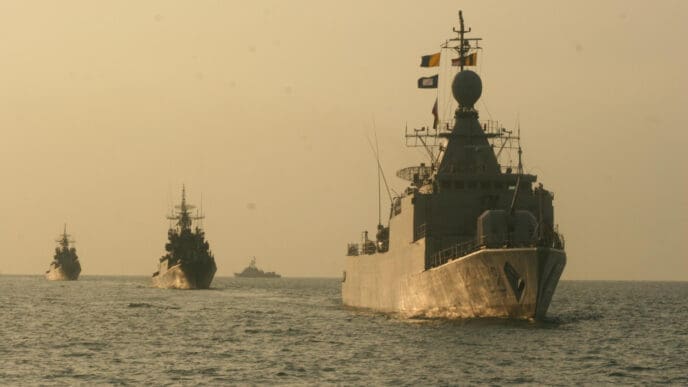The potential for expanding trade with Europe is on the horizon, as discussions intensify around establishing a second port on Hudson Bay. This development comes amidst ongoing trade tensions with the United States. Manitoba Premier Wab Kinew, whose NDP government was elected in 2023, expressed openness to exploring this long-term project to increase shipping capacity beyond the current Port of Churchill. The current port, limited to a summer shipping season, predominantly supports an economy reliant on ecological tourism.
Following a meeting with European Union representatives and ambassadors from 18 member countries, Kinew highlighted the importance of balancing economic growth with environmental protection. The idea of diversifying port opportunities forms part of Manitoba’s strategy to strengthen its economy while safeguarding natural habitats, including those of belugas and polar bears.
European Union ambassadors are currently touring the Prairie provinces to discuss topics including trade and cultural ties. The recent meeting in Winnipeg served as a platform to demonstrate Manitoba’s eagerness to expand trade in sectors such as energy and agriculture. These discussions could pave the way for European companies to invest in essential minerals, energy, and other goods that could be transported through Hudson Bay and the Arctic.
Genevieve Tuts, the European Union ambassador to Canada, noted the potential for increased trade, emphasizing a focus on energy and raw materials crucial for the digital transition. She highlighted Manitoba’s low-carbon hydroelectric power and opportunities for economic cooperation with Indigenous peoples and advancements in biotechnology.
A second port, potentially located south of Churchill near the mouth of the Nelson River, has been a topic of consideration for decades. While previous discussions dismissed the concept due to cost concerns and potential environmental risks, recent political shifts and trade diversification efforts bring renewed interest. The site could accommodate larger ships and extend operations beyond the summer season, albeit requiring substantial infrastructure investments.
The former Progressive Conservative government allocated $6.7 million for a feasibility study on the NeeStaNan Utility Corridor project, which proposed the construction of a new pipeline or rail line to transport commodities. Supporters argue that Port Nelson could offer significant advantages over Churchill, contingent on major investment in the remote area.
Kinew believes there is growing interest in large-scale projects given the current international political climate. Manitoba’s low-carbon electricity, strategic tidewater access, and commitment to Indigenous collaboration are seen as valuable assets in attracting investment, whether from the EU or other parts of Canada.
The Evolving Landscape
The prospect of developing a second port on Hudson Bay has far-reaching implications for the region and beyond. If realized, it could serve as a catalyst for increased trade between Canada and Europe, potentially diversifying Manitoba’s economic landscape. Enhanced trade routes may bolster the local economy, create jobs, and open new markets for Canadian goods, fostering stronger economic ties between Manitoba and European nations.
While the proposal presents economic opportunities, it also brings challenges, notably in environmental preservation and infrastructure development. Stakeholders will need to address these concerns to ensure that the benefits of increased trade do not come at the expense of Manitoba’s unique ecosystems. Moreover, advancements in infrastructure could enhance connectivity, supporting both local businesses and larger multinational operations.
As discussions progress, the potential new port could symbolize a significant shift in the region’s trade dynamics, reflecting the changing needs and priorities of a globalized economy. For residents and businesses alike, the project represents both an opportunity for growth and a reminder of the importance of balancing progress with environmental stewardship.












